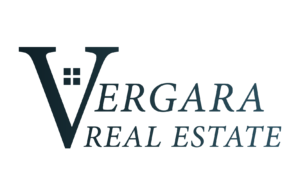Sizing Up ARMs: What They Are And Who They’re Good For
Adjustable-rate mortgages, also known as ARMs, come with pros and cons — like most major decisions in life. While the rate on the loan adjusts with market conditions, meaning it could fluctuate over time, ARMs are a lending option that could offer opportunity for the right buyer at the right time.
The Lending Landscape
Mortgages are either considered conforming or non-conforming, based on their type. The most common are conforming, which includes fixed-rate mortgages and adjustable-rate mortgages.
A fixed-rate mortgage offers borrowers a static interest rate on the loan, which means it will not change over the life of the loan. While those rates may be a bit higher than those offered with an ARM, since a lender has to hedge against market changes, a static rate provides a homeowner with financial predictability over the long term.
An adjustable-rate mortgage may offer a lower initial interest rate than a fixed-rate loan, but terms of the loan allow the lender to increase or decrease the rate over time based upon the terms of the loan.
Both types of loans term at 30 years and both scrutinize a borrower’s credit score, but borrowers with a higher debt-to-income ratio may have an easier time qualifying for an ARM than a fixed-rate mortgage.
Finding A Good Fit
There are a number of variables to consider when deciding between an ARM or a fixed-rate mortgage, most notable among those variables being the estimated length of time for which the mortgage is needed.
While the lifetime of the loan is 30 years, a buyer might know that they will sell the home within a few years. Why is this important? Because ARMs include an introductory, fixed-rate period when the interest rate won’t change. While the length of the fixed-rate period may vary from loan to loan, it is common to see introductory periods of 5 to 10 years. You may often see ARMs advertised as 5/1 or 7/1 ARMs. The first number represents the number of years the rate will stay the same. The second number represents how often the rate can adjust. So a 7/1 ARM will have the same rate for 7 years and can adjust every 1 year thereafter.
Once that introductory period is over, the adjustable-rate period begins. So, if a buyer expects to not keep the home past the loan’s designated introductory period, or if they expect rates to come down within the introductory period, it could make strategic sense to capitalize on the oftentimes lower rates offered by ARMs, as compared to 30-year fixed-rate loans. Oftentimes such ARMs are amortized over a 30 year period, so if a buyer wanted to purchase a home with an ARM and ride it out for the duration of the full term of the loan, they could. Such a move would be a roll of the dice, but as ARM rates can also go down, there could be benefit to the borrower by holding on to the note (although most who get ARMs do not plan on doing so).
ARMs also make sense in a high-interest rate market. If rates are above where a buyer is comfortable for the long haul, an ARM could provide a more affordable gateway to homeownership — and one that allows a buyer to pay down principal faster. ARMs don’t only adjust up. When interest rates stabilize and return to a more reasonable range, ARMs adjust down.
For contrast, fixed-rate mortgages are better for those buying their “forever” home, those who were able to lock in a low interest rate during a favorable period or those who live on a tight budget and need financial predictability. Regardless of the choice a buyer makes, it’s important to remember there are always options out there and that the market finds solutions to nearly every economic situation that arises.
If you’re considering a move, the team with Jose Vergara is ready to help. We keep an eye on market trends so you don’t have to. Moving is an exciting time of transition, and we’re ready to help you with it. Contact us today so we can learn more about how we can support your needs.










 The Deal
The Deal